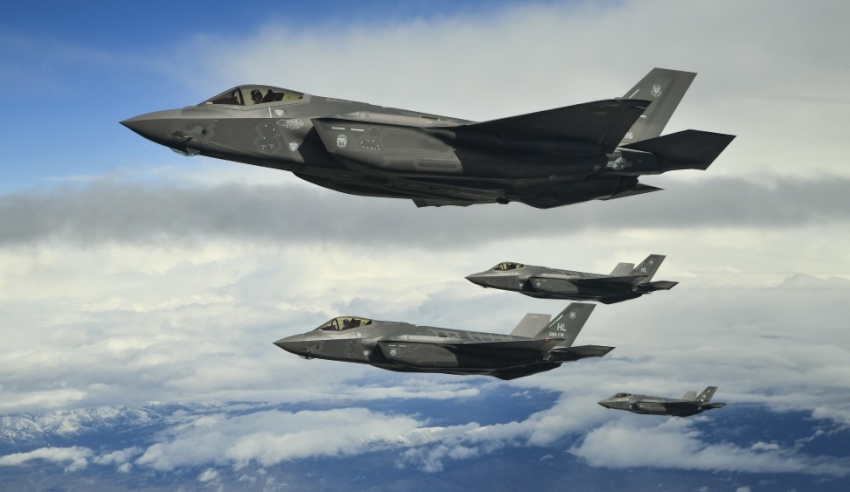The US Air Force successfully deployed a small number of F-35A Lightning II aircraft over the weekend on a long-planned training deployment to Europe.
The F-35A Lightning IIs, Airmen and accompanying equipment arrived at Royal Air Force Lakenheath, England, marking the aircraft’s first overseas training deployment to Europe.
The aircraft are scheduled to conduct training with other US and NATO aircraft based in Europe for several weeks as part of the European Reassurance Initiative.
The F-35As are from the 34th Fighter Squadron, 388th Fighter Wing and the Air Force Reserve’s 466th Fighter Squadron, 419th Fighter Wing, Hill Air Force Base, Utah, and will conduct air training over the next several weeks with other Europe-based aircraft in support of the European Reassurance Initiative.
Lockheed Martin Aeronautics said the training deployment signifies an important milestone and natural progression of the F-35 program, allowing the USAF to further demonstrate the operational capabilities of the fifth generation fighter aircraft. It also assists in refining requirements for eventually basing the F-35A in Europe, which is scheduled to receive the aircraft in the early 2020s. Once the aircraft arrive in Europe, US Air Forces in Europe (USAFE) and US European Command will release additional information about the F-35A's training deployment as it becomes available.
The US Air Force also said the deployment is a significant milestone for the US and NATO allies.
"This is an incredible opportunity for USAF Airmen and our NATO allies to host this first overseas training deployment of the F-35A aircraft," said General Tod D. Wolters, US Air Forces in Europe – Air Forces Africa commander.
"As we and our joint F-35 partners bring this aircraft into our inventories, it’s important that we train together to integrate into a seamless team capable of defending the sovereignty of allied nations."
As part of the natural progression of the F-35 program, an overseas training deployment has been part of the Air Force’s plan since the F-35A was declared combat capable last year.
"RAF Lakenheath will be the first overseas beddown location for the F-35A, this deployment allows our pilots and maintainers to learn more about the European operating environment and will improve our interoperability with partners in the region" Gen. Wolters added.
As part of the training deployment, the aircraft will forward deploy to NATO nations to maximise training opportunities, build partnerships with allied air forces and gain a broad familiarity of Europe’s diverse operating conditions. The introduction of the premier fifth-generation fighter to the European area of responsibility brings with it state-of-the-art sensors, interoperability and a broad array of advanced air-to-air and air-to-surface munitions that will help maintain the fundamental sovereignty rights of all nations.
The transatlantic flight for this training deployment was supported by Air Mobility Command and the 100th Air Refueling Wing, RAF Mildenhall, England. Multiple air refueling aircraft from four different bases offloaded more than 400,000 pounds (181,818 kilograms) of fuel during the "tanker bridge" from the US to Europe. Additionally, C-17 and C-5 aircraft moved airlift support, moving maintenance equipment and personnel.
The F-35A is a fifth generation fighter that provides the joint warfighter unprecedented global precision attack capability against current and emerging threats, while complementing the Air Force's air superiority fleet. The F-35A is a multi-role precision attack fighter with unmatched lethality, survivability, and interoperability.
Australia is set to receive 72 F-35A aircraft, with the full fleet in service by the end of 2023. Two, AU-001 and AU-002, have been delivered and each cost more than US$120 million.
Over 30 Australian companies have already participated in production supply chains to provide high-end solutions to the JSF capability. The current cumulative total of Australian JSF production contracts is US$681 million and is forecast to reach almost US$4 billion in 2038.



